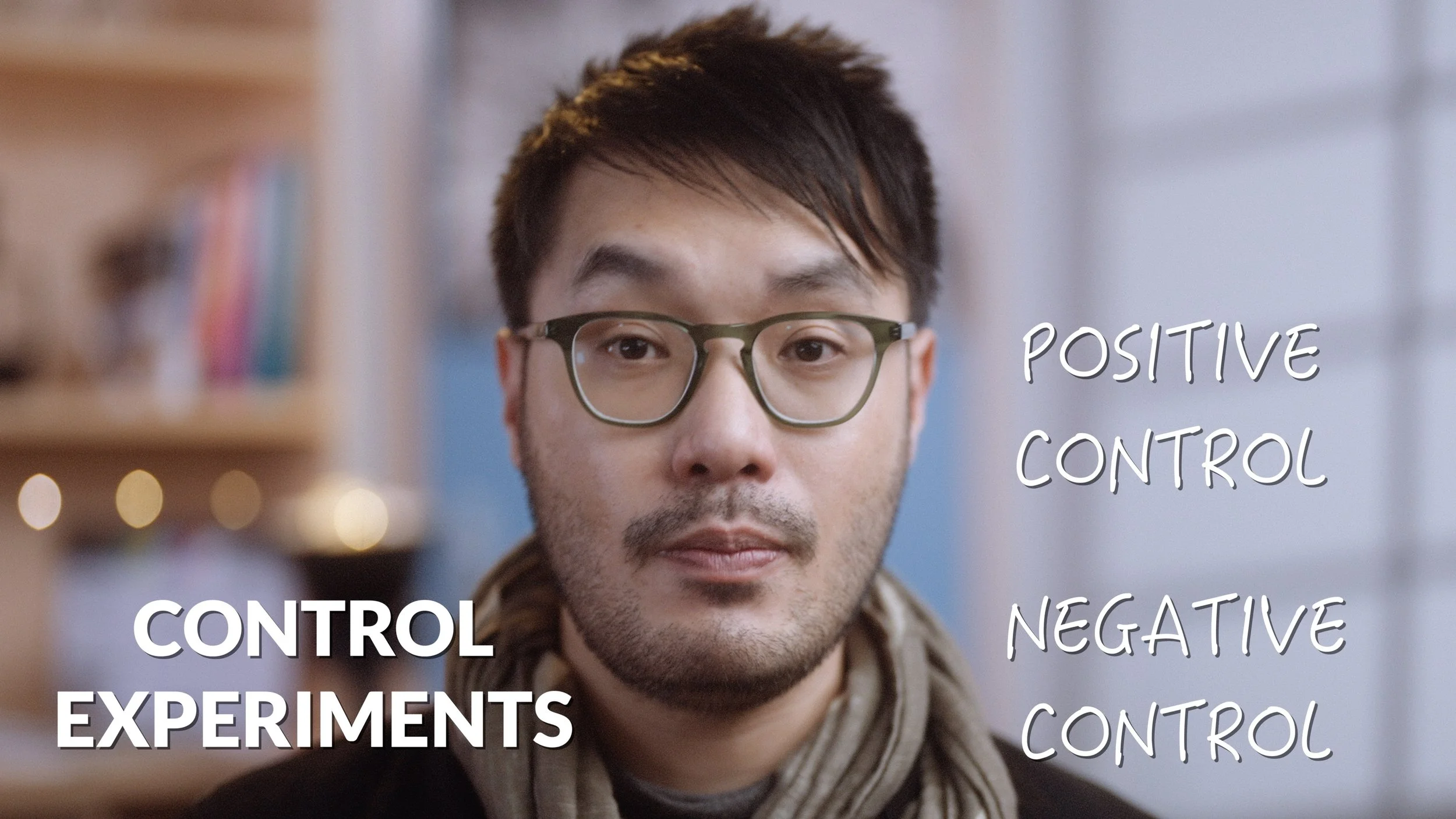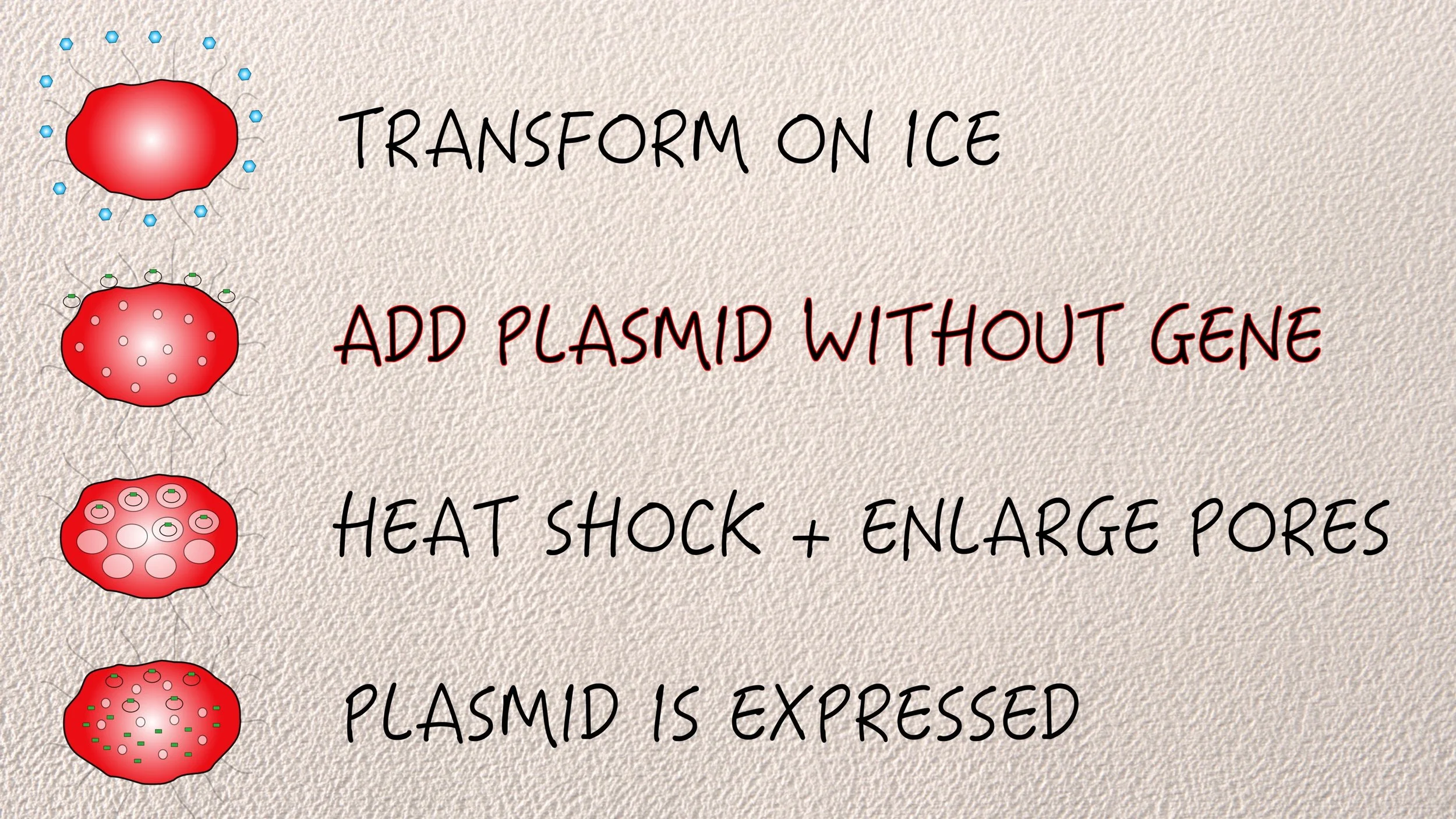The “Controllables”
Biology and the molecular biosciences is a discipline of nuance and subtlety - our “breakthrough” discoveries are not dramatic in the moment.
A slightly darker colour change, a small band appearing, or a reading that is slightly lower or higher than we expected…
This reflects the complexity of organisms and how tightly constructed every part of our biology is. Even a 5-10% shift in gene expression can mean the difference between normal cell growth and cancer. A 5-10% difference might also mean nothing - it could just be the statistical margin of error. The thin line that separates genuine breakthroughs from random background noise only exists if we can control as many experimental conditions as possible.
Designing experiments needs more than hands-on competency though, you also need cognitive competency to think about and plan your experiment. Ideally you want a baseline of comparison, an experimental trial where nothing is being added or changed - you don’t expect to see any changes or effect at all, and this is a control experiment. An important analytical skill is to look at any experiment and identify what are good positive and negative controls for the experiment you’re designing.
This is all in the abstract, so let’s talk through 5 examples using different experimental techniques:
Culture-based Testing
There are a whole range of tests to identify or detect pathogens within different samples. A biochemical test, that shows bubbles, colour changes, or agglutination if a specific pathogen is present within the patient sample.
What if every patient sample shows bubbles? At what point do you become suspicious if every test is coming back with agglutination?
So you need a negative control - a patient sample that doesn’t contain any pathogens, or contains a different pathogen than the one that is being tested for. Only if that sample tests negative, can you trust a positive result. What about a positive control? Well you can have a pure culture of that specific pathogen, and run it through the test. The test should pick it up and show a positive result. If the test cannot identify the purified form of the pathogen, it won’t be sensitive enough to pick up trace amounts present in a patient sample.
Antibiotic Sensitivity Testing
To check if a new superbug is resistant to antibiotics, we can add a whole array of different antibiotics to it using the disk diffusion method or broth cultures. What would be a good negative control? You can either setup a whole new plate of the same bacteria growing in the absence of any antibiotics, or simply look at a part of the agar plate without any discs in close proximity - there should be some bacterial growth on these areas. Another approach would be to add an antibiotic that you know won’t work on this bacteria. What would be a positive control? It would be an antibiotic that you know will kill the bacteria. If you have both positive and negative controls in place, you can actually assess if the other results are valid.
DNA Transformation
A DNA transformation is where we are trying to express a new gene inside bacterial cells. What would the controls be? It would be bacterial cells that went through each part of the transformation - heat shock, incubation, but no DNA of the gene of interest was added. Only bacteria expressing the new gene will be able to survive on these plates, so a negative control should not have any bacterial cells surviving. If there are colonies on your negative control plate, you can’t trust any of the colonies on your actual experimental plate. Positive controls aren’t that common in transformations, but maybe you can think of one to setup
Polymerase Chain Reaction (PCR)
We have primers designed to amplify a specific section of DNA, and if the PCR works we will see a band appear when we run the reaction on a gel. A band appearing doesn’t mean much though - it can be a random bit of DNA, or a contaminant.
What would be a good negative control? We can setup a reaction using exactly the same mastermix, except no template DNA is added. There will be no template DNA for the primers to bind to, so we shouldn’t see any bands appear unless they are contaminants. There isn’t really a great positive control you can use in a PCR - you can use a different set of primers that you know will definitely amplify something, but the biggest variable in a PCR are the primers you’re using so it’s not a great fit. On top of the controls we can also check the size of any bands against a DNA ladder, to make sure that it matches the gene we want to amplify.
Tissue Culture
If we’re adding a new drug that is supposed to promote cell growth, we can add the drug to cells, and monitor its growth everyday. Cells would normally grow anyway, so the negative control would be the same cells as the real experiment, in a different flask, without any of the drug added. The growth rate should be slower than the real experiment. A positive control can be a drug that you know promotes cell growth - and in this case the growth should definitely be faster than the negative control. You can then compare the new drug against the old drug and see how potent this drug is compared to one that everyone already knows about and uses to promote cell growth normally.
***
There it is, 5 examples of different biology experiments, each with different approaches for designing control experiments. Only by controlling the controllables can scientists separate the signal from the noise and define genuine experimental discoveries.
Jack.






